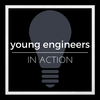About English Reading, Writing, and Grammar |
Learning how to apply the skill of writing is very important both for academics and the real world. Academically, it definitely comes in handy, especially in advanced classes where students may be graded on several essays each week. Being articulate is also quite useful when applied outside of school, from simple tasks like writing a sophisticated email to more important ones like building connections professionally.
ThinkReading: Designed as a precursor to the ThinkSAT program, the ThinkReading program gives motivated 7th, 8th, 9th and 10th graders a head start in developing active reading skills necessary to excel in a challenging high school AP/IB environment. This is not a conventional reading program that lacks method and moves at a leisurely pace. Indeed, ThinkReading is entirely directed and target-based: the clear goal for each student is mastery of the Active Reading Basic 6 repertoire of strategies (half of the Active Reading 12 system featured in the ThinkSAT program) that will transfer (1) in the short-term to better grades in school, (2) eventually to a greater performance boost in the ThinkSAT program, and (3) ultimately to a maximum SAT score. The Active Reading system is continuously supported by reading/discussion of current events articles and smart vocabulary learning. ThinkWriting: The ThinkWriting program gives motivated 7th, 8th, 9th and 10th graders a head start in developing versatile writing skills necessary to excel in a challenging high school AP/IB environment. ThinkWriting sees the thought processes behind writing to be essentially the same conceptually as those behind oral conversation. The program approaches writing scientifically by breaking down the structural components of expository writing and using that understanding to piece together original compositions. ThinkWriting is entirely directed and target-based: the goal for each student is mastery of the two types of basic analytical writing that will transfer (1) in the short-term to better grades in school classes that require analytical writing, (2) eventually to a greater performance boost in the ThinkSAT Essay program, and (3) ultimately to a maximum SAT Essay score. Getting a head start is once again the key, and 5th and 6th graders can gain this advantage in the ThinkReading+Writing program. In the Reading portion of the program, students will position themselves to be ready for maximum performance in the full-fledged ThinkReading program by mastering the Active Reading Basic 4 strategies using ISEE and SSAT level reading comprehension passages. In the Writing portion, students will get better ready for the ThinkWriting program by (1) navigating “Position on a Topic” type essays and (2) learning a host of writing conventions, including paragraph and sentence design, topic sentences, transitions, and smart “trigger words and phrases." |
About Our Courses |
Our courses are taught by Mr. Ulysses Hwang, an expert specializing in literature, writing, and SAT. With his expertise, he'll teach students creative writing and grammar through interactive lessons.
Here is what he said: "Over 20 years ago, in 1998, when I started teaching SAT, ACT, and GRE at Kaplan, I wasn’t satisfied to merely be impressed by well-read high school students and college literature majors who could effortlessly describe the complex tones of reading passages while the rest of the class sat confused and frustrated. How could I devise methods to get people there who weren’t already there? Although the challenge was verbal in nature, I knew the answers would be found in the science. With a background in brain and behavior, I started with the premise that all mental processes can be broken down piece by piece, even if the untrained individual is consciously unaware of those pieces. From there, I developed a myriad of reading and writing methods based on analyzing and understanding structural components. The idea is elegantly simple yet difficult to get at without the relevant science background: When we break writing down to component structures, it’s easier to “activate” cognitive processes, whether for the purpose of (A) comprehending someone else’s writing or (B) creating a line of cohesive thought that is then transferred into our own writing. There’s little marketing here other than the substance of the science behind my words. Note: It’s directly through these efforts that I developed the Active Reading 12 system (which has trickled down to the ThinkReading program) that is famously responsible for 90% of YEA students scoring above 1500 on the SAT and 100% of YEA students who previously prepped with another SAT company getting significantly higher SAT scores. And equally important (if less famously), it is these same efforts that have allowed the ThinkWriting program to systematically create better writers. For ThinkReading and ThinkWriting, when students ask how they can improve their reading and writing, to respond with “read more” and “write more” is unacceptable. Remember: Always the science first!" |
Course List:
Literature and Writing I
- Who should attend: students who have not taken the same class at YEA and are in 7th grade or below.
- 10 classes, 2 hours per class
- Saturday, 3:00 - 5:00 PM
- $550 for early bird, $660 otherwise
Literature and Writing II
- Who should attend: students who have taken Literature and Writing I at YEA or are in 9th grade or below with the same level.
- 10 classes, 2 hours per class
- Saturday, 1:00 - 3:00 PM
- $550 for early bird, $660 otherwise
Literature and Writing III
- Who should attend: students who have taken Literature and Writing II or are in 10th grade or below with the same level.
- 10 classes, 2 hours per class
- Saturday, 5:00 - 7:00 PM
- $550 for early bird, $660 otherwise
